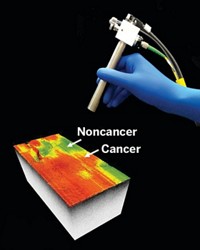Advertisement
Grab your lab coat. Let's get started
Welcome!
Welcome!
Create an account below to get 6 C&EN articles per month, receive newsletters and more - all free.
It seems this is your first time logging in online. Please enter the following information to continue.
As an ACS member you automatically get access to this site. All we need is few more details to create your reading experience.
Not you? Sign in with a different account.
Not you? Sign in with a different account.
ERROR 1
ERROR 1
ERROR 2
ERROR 2
ERROR 2
ERROR 2
ERROR 2
Password and Confirm password must match.
If you have an ACS member number, please enter it here so we can link this account to your membership. (optional)
ERROR 2
ACS values your privacy. By submitting your information, you are gaining access to C&EN and subscribing to our weekly newsletter. We use the information you provide to make your reading experience better, and we will never sell your data to third party members.
Analytical Chemistry
Watching immune proteins and therapeutics diffuse through lymph nodes
ACS meeting news: Microfluidic device provides easy way to monitor cytokine migration
by Celia Henry Arnaud
August 24, 2017
| A version of this story appeared in
Volume 95, Issue 34

Proteins called cytokines that are secreted by cells within the lymph nodes are often used as drugs to manipulate immune responses. But something so basic as how these proteins travel through lymph node tissue is poorly understood.
At last week’s ACS national meeting in Washington, D.C., in a Division of Analytical Chemistry symposium, Ashley E. Ross of the University of Cincinnati described a microfluidic platform for studying the diffusion of cytokines through mouse lymph node tissue. She did the work while still a postdoc with Rebecca R. Pompano at the University of Virginia. The device is a simplified version of one they published earlier this year (Analyst 2017, DOI: 10.1039/c6an02042a).
Ross studied the diffusion of fluorescently labeled cytokines in parts of the lymph node and measured how it differed in normal and inflamed tissue.
These measurements enabled Ross to calculate diffusion coefficients for various cytokines through the tissue. By combining the measured values with the diffusion coefficients of the cytokines in solution, she was able to determine the so-called tortuosity of the tissue, which was slightly less than that of brain tissue. “That explains the extent of hindrance that proteins experience in the tissue,” she said.
Grégoire Altan-Bonnet, head of the immunodynamics group at the U.S. National Institutes of Health, has studied cytokine diffusion in mice (Immunity 2017, DOI: 10.1016/j.immuni.2017.03.011).
“You really are much better off with a microfluidic device than with mice,” especially for studying multiple cytokines at a time, Altan-Bonnet told C&EN. “We can inject stuff into blood, but in terms of spatial, temporal, and quantity control, it will never compare to what we can do in a microfluidic device.”
“The next thing we want to do is to study actual drugs in lymph node tissue,” Ross said. Understanding how therapies transport through diseased versus healthy tissue, she added, may aid the development of more effective immunotherapies.



Join the conversation
Contact the reporter
Submit a Letter to the Editor for publication
Engage with us on Twitter